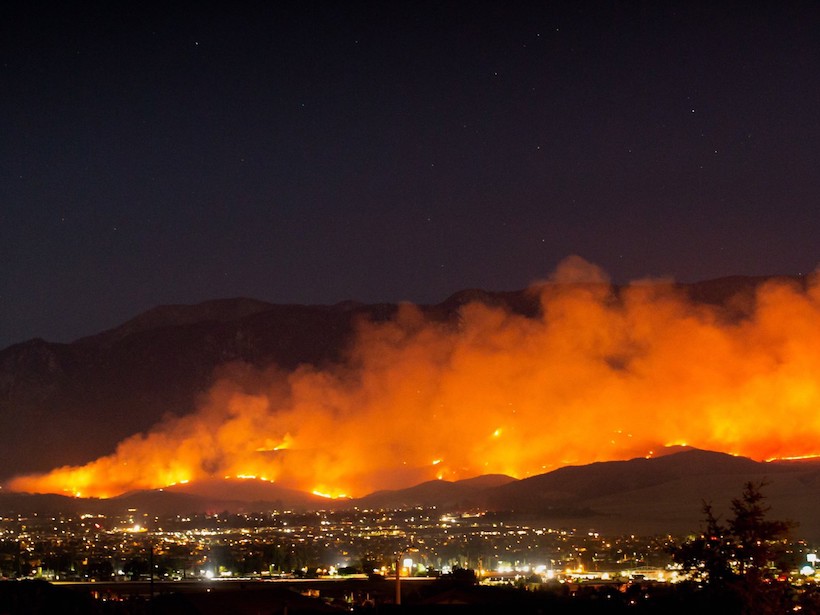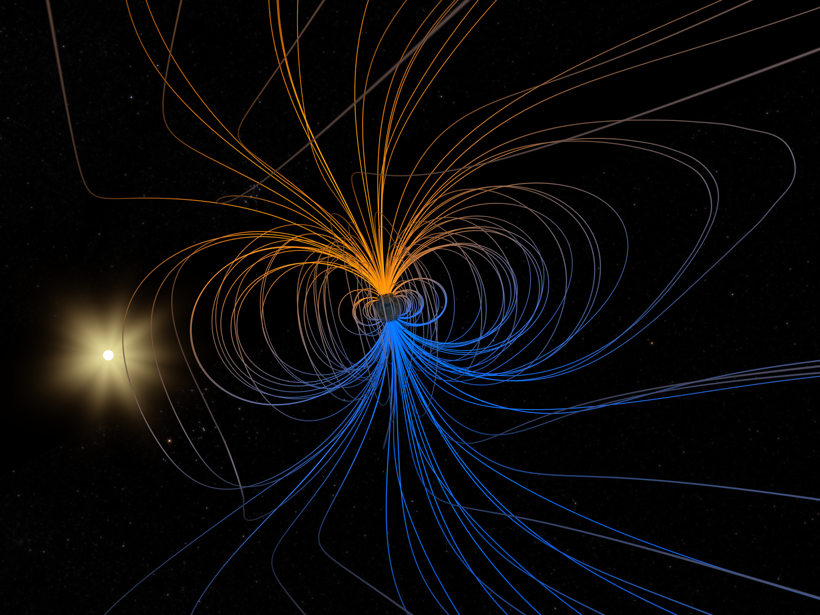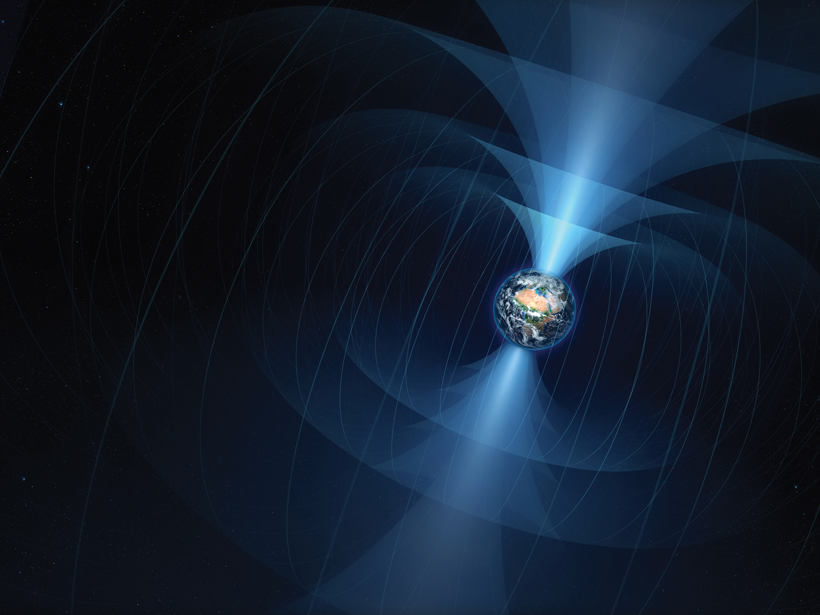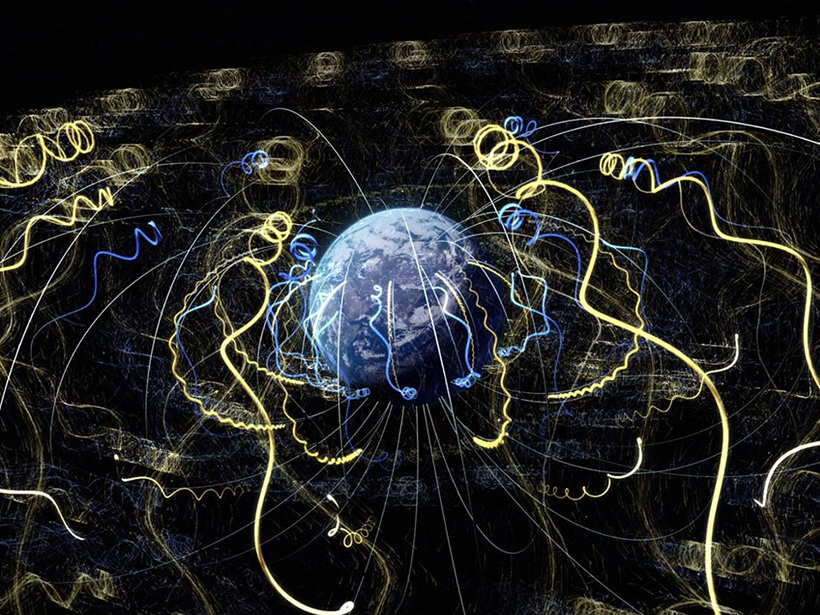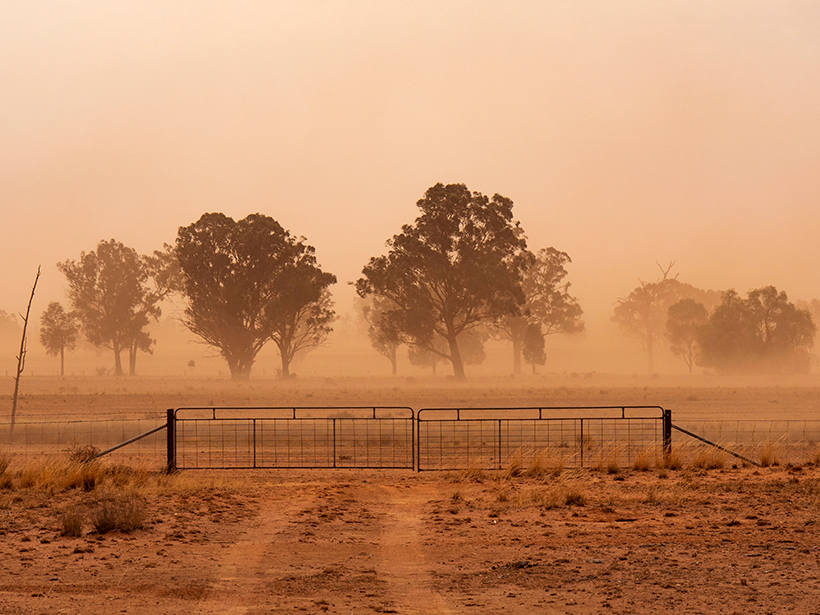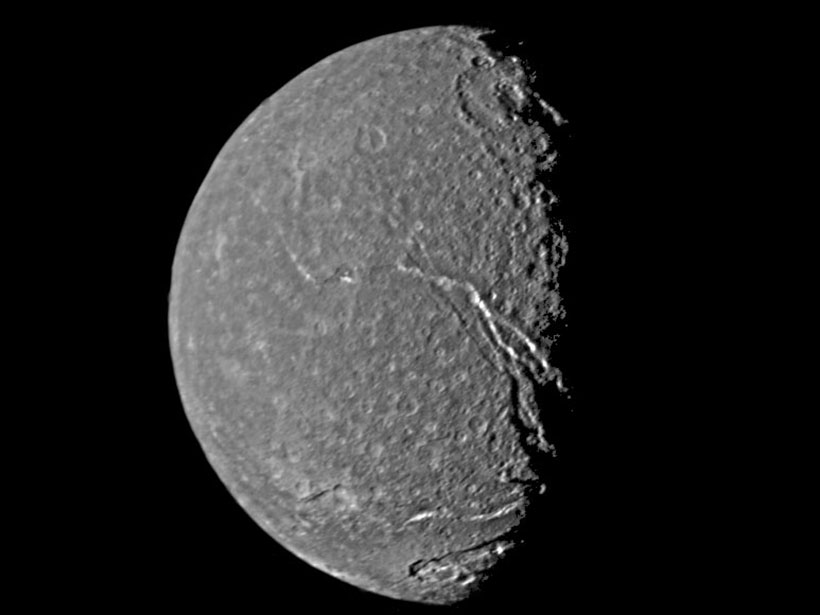A study of trends in wildfire occurrence over the past 30 years shows that environmental, climatic, and human-related factors can point out regions with high fire probabilities.
AGU 2020
The Best of Eos in 2020
What Earth and space science stories stood out this year, and what are we looking forward to in 2021?
Tracking How Plastic Moves in the Coastal Ocean
Researchers used a wave tank to study the movement of plastic particles experimentally and to understand the role of particle density in drift behavior.
The Wobbly Anomaly and Other Magnetic Weirdness
From the connection between Earth’s core and life on the surface, way out to the ends of the solar system, this month’s issue of Eos takes a look at the study of magnetic fields.
The Herky-Jerky Weirdness of Earth’s Magnetic Field
Dented, erratic, and wandering, our field is constantly changing its mind.
El Zooplancton Gelatinoso Transfiere Una Cantidad Significativa de Carbono a las Profundidades del Océano
Un nuevo estudio muestra que las medusas y las salpas marinas no reciben el crédito que merecen por su papel en el ciclo del carbono en el océano.
A New Approach to Characterizing Space Plasmas
When plasma particle velocity distributions have multiple, distinct parts, treating each as a separate beam may yield more intuitive results.
Long-Term Drought Harms Mental Health in Rural Communities
In rural and remote communities in Australia, psychological distress worsened during the first few years of a prolonged drought. Other signs of poor mental health persisted beyond that time.
Do Uranus’s Moons Have Subsurface Oceans?
Scientists tested whether a classic technique could detect subsurface oceans on the moons of Uranus. In this scenario, the planet’s oddball magnetic field offers a big advantage.
Certain Rock Formations Can Lead to In-Home Radon Risks
Researchers in Kentucky have merged results from home test kits with the state’s geologic map to produce a map of indoor radon potential based on the geology underlying homes in the state.

